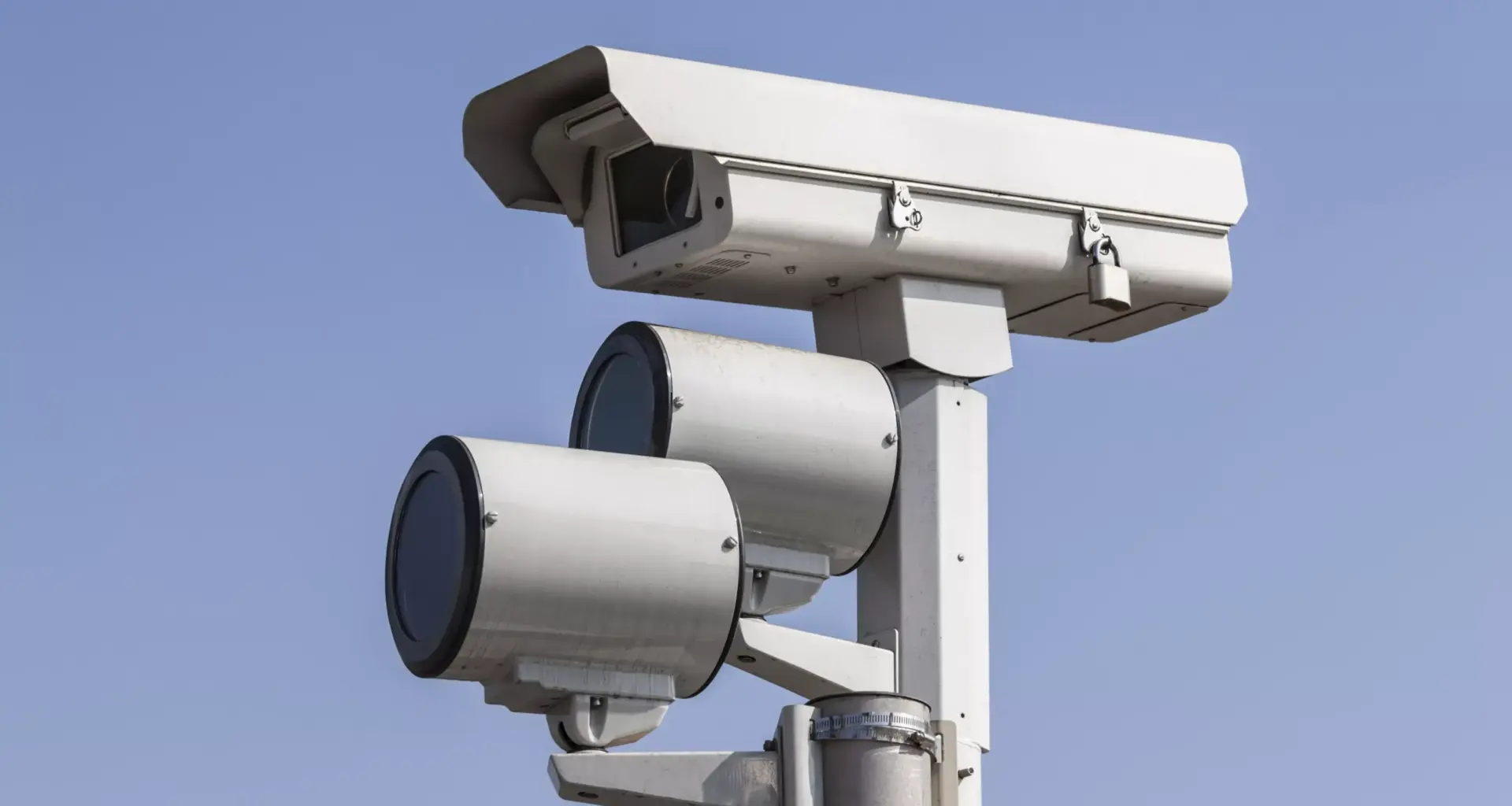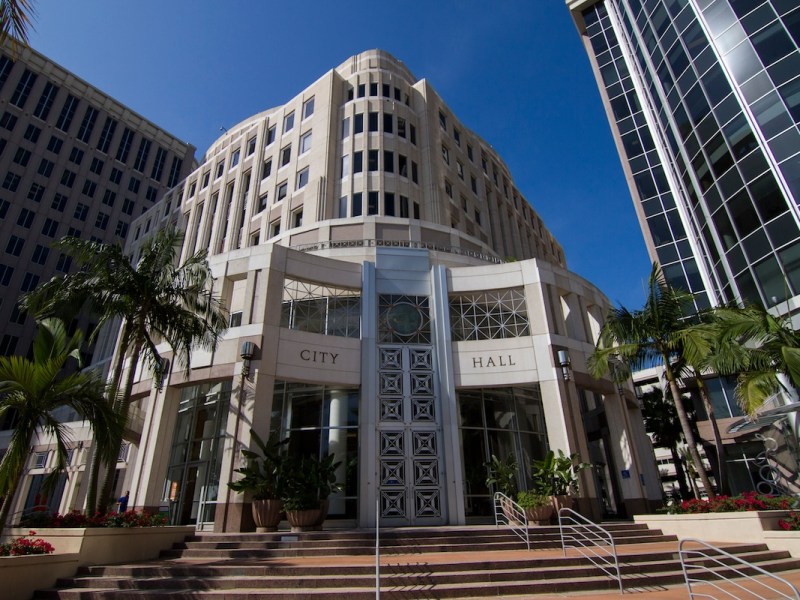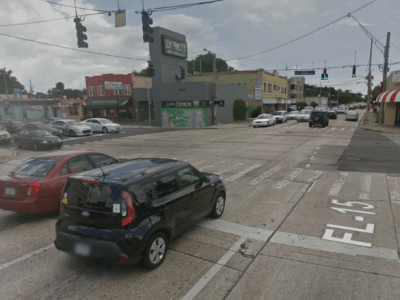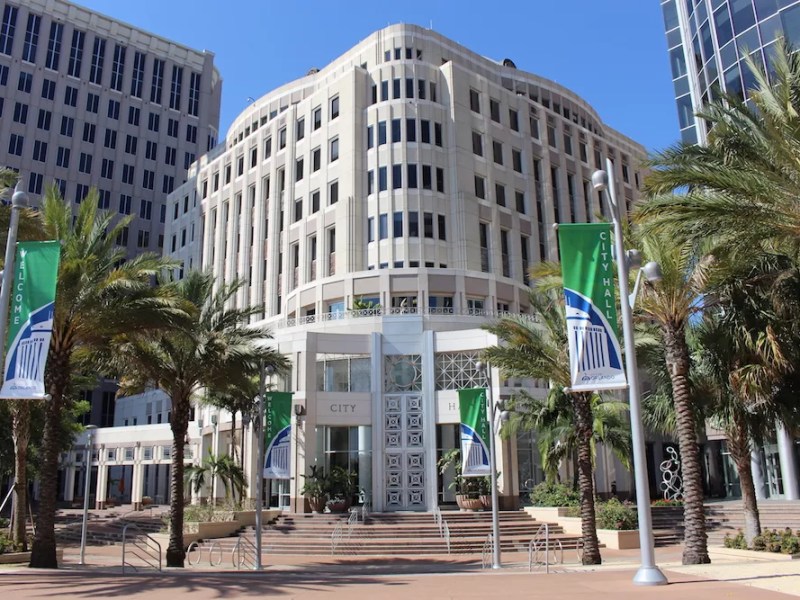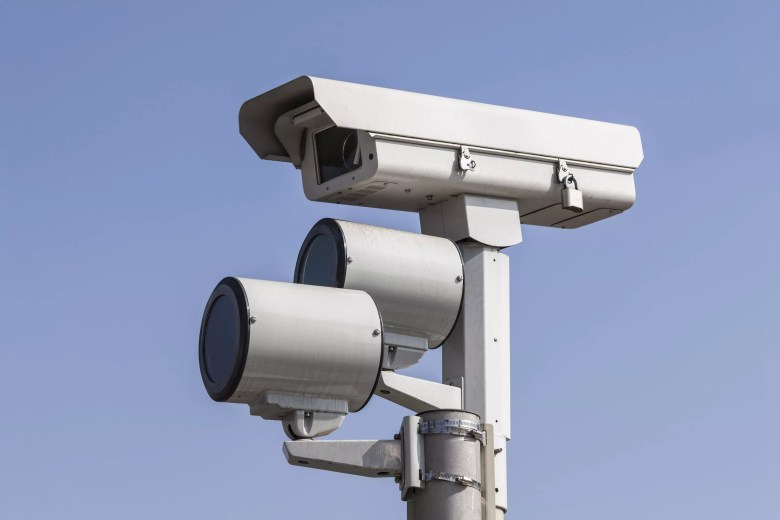 Credit: Photo by trekandphoto via Adobe Stock
Credit: Photo by trekandphoto via Adobe Stock
If you’ve run a red light in Orlando and have gotten away with it scot-free, that could prove to be even more of an outlier experience very soon. Orlando city commissioners on Monday gave a final vote of approval to a significant expansion of the city’s red light camera program, which is intended to deter drivers from illegally running red lights.
“Our goal is to reduce dangerous red light crashes and move toward our Vision Zero mission to eliminate traffic deaths and serious injuries on the city streets by 2040,” Orlando mayor Buddy Dyer said, referencing an action plan first established by city leaders in 2021.
Currently, the city has red light camera detectors set up at just 25 intersections across Orlando, representing just 5 percent of the total intersections with traffic lights. Under the proposal approved Monday, however, the city will now move forward with installing cameras at 55 additional intersections — for a total of 80 covered intersections — that pose a “heightened safety risk.”
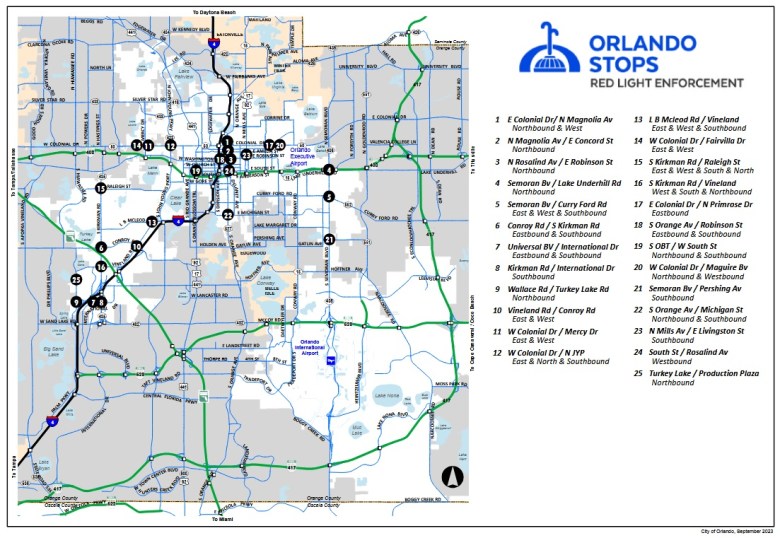 The 25 intersections where red light cameras are currently set up in Orlando. Credit: City of Orlando
The 25 intersections where red light cameras are currently set up in Orlando. Credit: City of Orlando
Intersections targeted for cameras include Amelia Street and Bumby Avenue, more than a dozen intersections with Colonial Drive (including the no-left-turn Colonial and Mills Avenue intersection), and several intersections with John Young Parkway, Kirkman Road, and Orange Blossom Trail.
Under a Florida law approved in 2024, cities like Orlando must consider traffic data and determine an intersection constitutes a heightened safety risk in order for them to move forward with installing any new red light camera detectors.
Orlando’s camera program, which rakes in millions of dollars each year, was first established in 2008, two years before state law officially permitted the city to do so. Dubbed Orlando STOPS, it’s a program similar to those in at least 37 other Florida municipalities, according to a Florida Department of Highway Safety and Motor Vehicles report. There’s conflicting evidence about whether these programs actually help improve traffic safety.
“When people get a red light running ticket, they’re not happy, but they did something wrong, and they pay for it,” city commissioner Patty Sheehan, who previously spoke in favor of the program’s expansion, said Monday.
Notice of violations are issued to drivers by mail, accompanied by a $158 fine, due within 90 days. They’re sent to drivers who specifically are caught crossing into an intersection after the traffic light turns red. If the light is still yellow, then it won’t count as a violation.
Drivers are given information in their notice for how to view the camera footage online, and can contest the violation from the city if they believe it was wrongfully issued.
A red light camera violation does not add points to your driving record, although failing to pay the initial fine can lead to a uniform traffic citation — resulting in an even steeper fine of $262, plus other potential penalties.
According to city documents, Orlando issued more than 60,000 violation notices to drivers from July 1, 2024, to June 30, 2025, and issued 20, 412 uniform traffic citations for unpaid fines — collecting a whopping $7.6 million in revenues total, split between the city and the state government.
Documents show that the city collected $4.2 million from that split, with $3.4 million distributed to the state. The state then distributes that revenue to hospital trauma centers, the spinal cord and brain injury state trust, and the Florida Department of Revenue, according to city documents. The city’s share of funds largely go toward financing traffic safety projects, including the continued operation of the camera program.
“All revenue collected from Red Light Camera notices and citations goes directly into the City’s Vision Zero Traffic Safety Fund, which is dedicated to eliminating traffic deaths and serious injuries by enhancing roadways and reinvesting in safer streets for everyone,” a city spokesperson previously told Orlando Weekly.
The city has claimed that, over the last five years, cameras at existing locations have helped reduce angle crashes at those intersections by 22 percent. According to data provided to Orlando Weekly, angle crashes specifically decreased from just nine total in 2020 to seven in 2024. That’s after angle crashes increased to 10 in 2021, 14 in 2022, and back down to 13 in 2023.
Still, research on similar programs elsewhere has found that while certain types of crashes (such as rear-ending) may increase following the installation of red light cameras, the number of fatal crashes (which also tend to be more costly) tend to be lower, compared to areas without such programs in place.
City commissioner Shan Rose, representing District 5, expressed concern Monday about the number of cameras that would be installed in her district, specifically, and asked if funds generated through the program’s fines would be distributed back into the neighborhoods where cameras are installed.
Rose’s district covers parts of Orlando west of downtown and includes some of Orlando’s poorest neighborhoods, including the majority-Black Parramore.
“We have higher pockets of poverty,” she said.
Laura Hardwick, safety mobility manager for the city’s transportation department, said they consider several factors for the use of traffic safety funds generated through the program, including location.
“When we get a project that might be eligible for the safety funds, we look at five factors to make sure that it’s a good use of the funds,” said Hardwick. “One of those is proximity to red light cameras. So, we want to have projects that are within a mile of our red light cameras.”
A city spokesperson told Orlando Weekly they are aiming to have the new red light cameras up and operational by summer 2026.
Subscribe to Orlando Weekly newsletters.
Follow us: Apple News | Google News | NewsBreak | Reddit | Instagram | Facebook | Bluesky | Or sign up for our RSS Feed
Related Stories
Orlando Weekly asked candidates what their priorities are and how they’d advance those if elected.
Drivers caught running red lights face a potential $158 fine
The Catholic Charities of Central Florida, which also uses government money to play landlord, recently celebrated the defeat of Florida’s abortion rights measure.
Related

